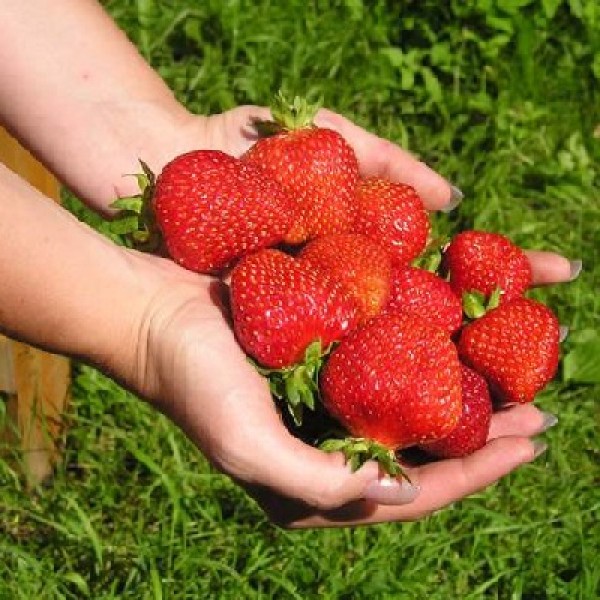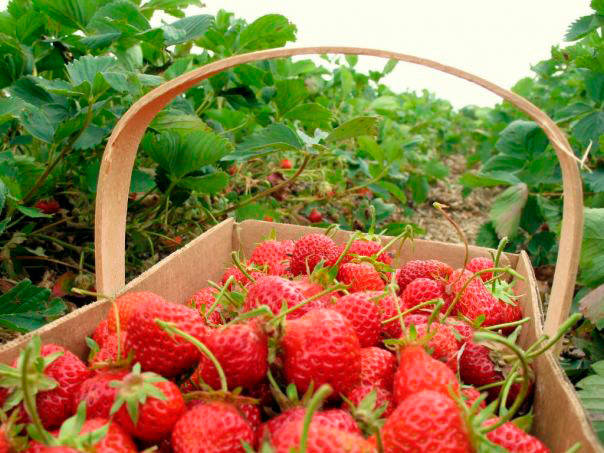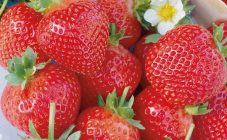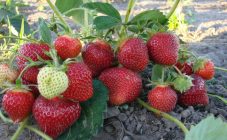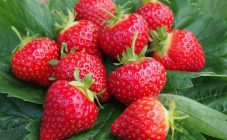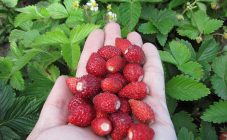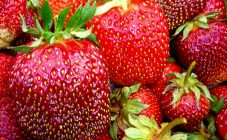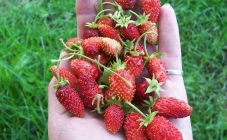Content:
Thanks to the labor of breeders, many crops have been bred that can be planted in the cold regions of Russia. One of these is the Lord strawberry.
Garden strawberry Lord was first grown in the UK. The variety is perennial, fruits are large, moderately late fruiting. Strawberries are versatile when planting. Can be grown both at home and on an industrial scale.
Description of the strawberry variety Lord
Culture has the following characteristics:
- The berries are large, red, juicy. Weight up to 110 g.
- The taste is sweet.
- The variety is unpretentious. Pests and diseases rarely attack.
- Self-pollinated strawberries.
- Repaired - bears fruit up to 4 times per season.
- Self-fertile, male and female flowers on the same bush. Due to this, more fruits are obtained and larger in size.
- The yield is high. For 4 years - up to 3 kilograms per bush.
- An adult plant has up to 30 peduncles, each growing up to 15 berries.
- Fruiting in one place up to ten years.
- The berries are harvested from mid-summer.
- The bushes are high, up to half a meter. Stems are straight and powerful. Due to the fact that the peduncles are also high, it is necessary to pull the line and lay them on it. Then you can avoid damage to the plant due to the large weight of the berries.
- The shape of the fruit is round and elongated.
- The berry is frost-resistant.
- Mid-late ripening.
Strawberries are a very healthy and vitamin-rich crop.
Features of agricultural technology
Soils suitable for strawberries:
- sandy loam;
- loamy.
The acidity of the soil should be low, the humidity should be moderate.
Landing rules:
- They begin to plant in the spring. A well-lit, level place is chosen so that the roots of the plant are sufficiently moistened.
- The land needs to be cultivated from weeds and fertilized.
- Varietal seedlings must be planted very spaciously to increase yields, and also so that bushes of different types do not get dusty. It is advisable to place them in a checkerboard pattern.
- Dig a hole 10 to 15 centimeters deep, moisten, add ash and sand.
- The seedling is placed in the hole and sprinkled gently. The root collar should be level with the edge of the soil.
- Lightly tamp, water. Sprinkle with mulch.
Individual bushes will grow from the mustache. They can be cut and replanted. With the right agrotechnical measures, the bushes take root well and give a rich harvest.
Care
To prevent the leaves and berries from rotting, it is necessary to fertilize the strawberries, mulch, water, etc.
The main stages of care:
- Fertilizer. Apply organic feeding: humus and chicken droppings.
- Mulching. The ground around the bush is sprinkled with needles and sawdust. This prevents the soil from drying out and prevents weeds from growing. In winter, especially in the northern regions, you need to cover the plants with mulch, foliage, and special materials. With the onset of sunny days, all insulation is removed.
- To prevent the plant from wasting energy, you need to remove the mustache in time.
- Water the strawberries regularly. It is especially important to moisten the soil during the ripening of the crop.Sprinkling is suitable for the Lord variety: irrigation with special devices from several points. It can be watered in the morning or evening, during the flowering period the bushes are moistened only at the root.
- It is necessary to regularly loosen and weed the ground. Special tools are used: aerator, scarifier. All these procedures improve root nutrition and air access.
Subject to all agrotechnical requirements, the berry will be large and juicy.
Exposure to diseases and pests
Lord strawberries are quite resistant to pathogenic effects, but are not immune from adversity:
- Strawberry mites. When attacked by this pest, the leaves curl, deteriorate and fall off. Control measures: sprayed with acaricides. For example, Actellik drug - take 600 ml of water and 1 ml of chemical.
- Stem nematode. You can find out by the small light spots on the leaves. The fungicides Auparen and Horus are used.
- Gray rot. It occurs when there is an excess of moisture, due to shading. Prepare a solution for processing: 100 grams of mustard per 10 liters of water. Insist 2 days.
Advantages and disadvantages
The positive aspects of Lord strawberry include the following properties:
- She gives a mustache in moderation. There are enough of them for breeding, but not so many to break off.
- The fruits can be harvested for a very long time.
- Not susceptible to infection with diseases.
- Peduncles are strong and tall. Do not immediately fall from the weight of the berries. Tilts only under heavy loads.
- Good frost resistance, when covered in one layer withstands frost up to 8 degrees.
- The variety gives high yields. From one bush, you can collect up to 3 kg of berries.
- Perennial. You can harvest good crops up to 10 years in one place.
- Can be used in jelly, jam, compotes, fresh, for freezing.
Negative sides:
- Requires a lot of space. There should be up to half a meter between the bushes.
- You need to feed at least four times per season to get a good harvest.
Almost every gardener or gardener can grow Lord strawberries, but it is necessary to properly plant and care for the plants. Then there will be rich harvests and large berries that contain many useful substances.
